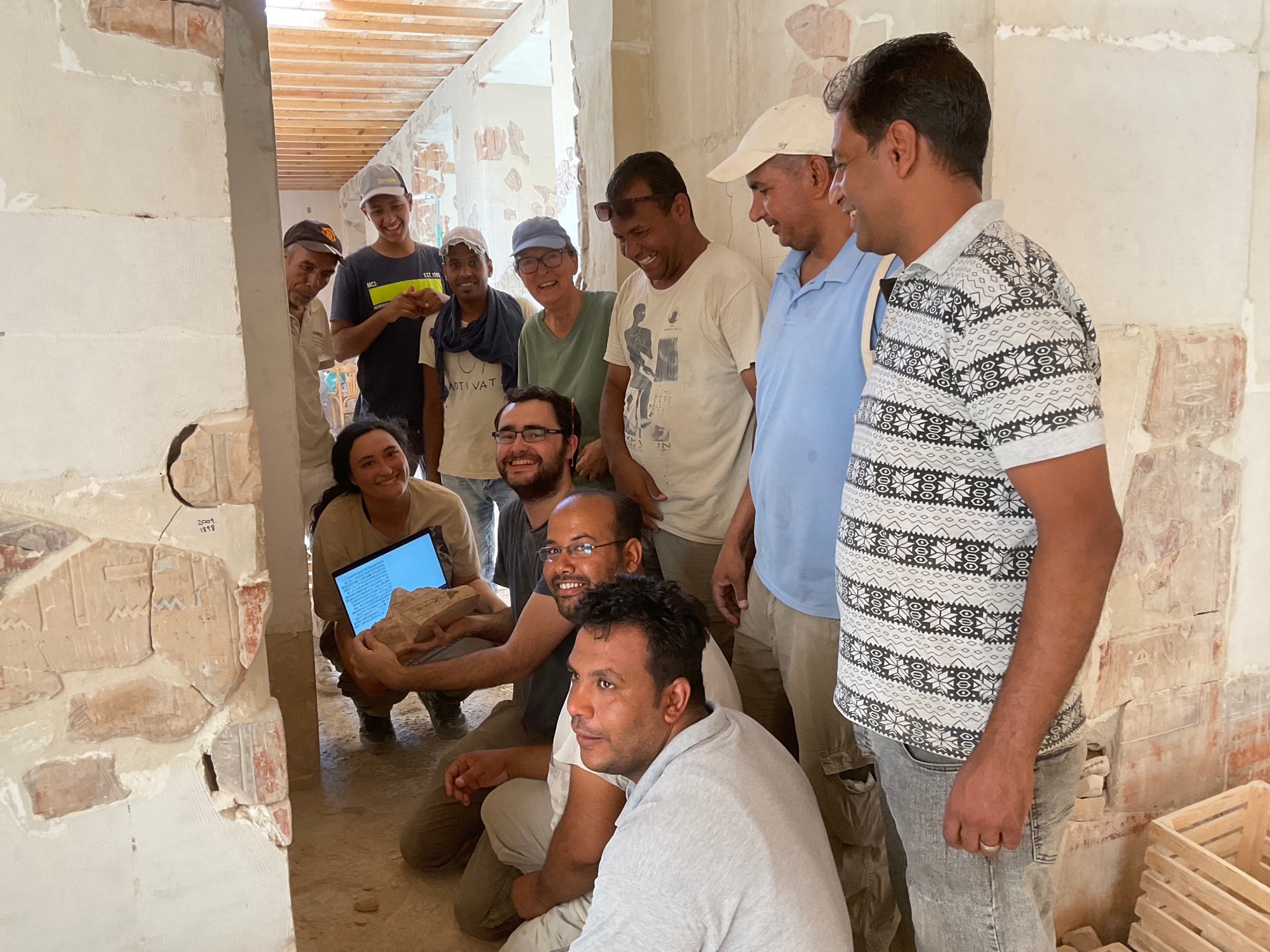John Rogers (Text), Marion Brew, Mohamed Shebib, Mohamed Bedawy, and the sacp Conservation Team, Video recorded by Elena Pischikova and Edited by Katherine Blakeney
The pyramid texts, inscribed on several walls of the second pillared hall, are some of the most intriguing texts in the whole of Karakhamun’s temple-tomb: while some are well-known, the identification of others still remains elusive after several years and others are well-identified but present difficulties in reconstruction. One of these texts, utterance 670, occupies one half of the passageway between the first and second pillared hall. This is a ‘resurrection text’ with wishes for the deceased to successfully rise in the afterlife, and includes the poignant phrase ‘though you have gone, you will return; though you sleep, you will awake; though you die, you will live’. Despite the clear importance of this text for Karakhamun, it has been difficult to reconstruct the positioning of fragments in this text; this is mostly due to the fact that this particular utterance is attested only a handful of times during this time, and the version created for Karakhamun is among the earliest of these. On top of this, as more fragments are unearthed it is becoming clear that the versions differ from one another in form and, occasionally, in content. For example, the inscriber has clearly used unusual and otherwise unattested determinatives (characters which classify the word to which they are attached), while shortening spellings in other places to allow room for the text to function in the space it occupies. Several other fragments belong to this text, with its distinctive carving style and horizontal layout, but the spellings they have are not consistent with the parallels we know (for example one fragment with the characters D-r-t which, while clearly belonging here, is not found in the other sources) – only Karakhamun can shed light on how this utterance was understood and composed in this time and place. New fragments, unearthed in the last week, join with other pieces excavated last year and allow us to begin reconstructing the first lines of this utterance, which read: ‘Words to be spoken: open the double doors of the sky! Throw open the double doors of the celestial expanse! The gods who are in the sky, they come to the first aq-priest Karakhamun, true of voice, for whom Isis wept….’ The fragments uncovered preserve traces of ‘double doors of the celestial expanse’ and ‘who wept’ on lines 1 and 2, as well as ‘the ba-powers of Pe’ in line 3. Having these portions of text over the first three lines marks an important step forward in identifying the layout of this utterance, giving a control point for adding further fragments, as well as its function in the wider textual composition of the tomb. While some of the copies in other tombs may be trying to mirror the positioning of utterance 670 in the Old Kingdom pyramid of Pepi II by placing it on a wall towards the south, Karakhamun’s placing of it in on the doorway instead makes a clear connection with this opening line’s declaration that the doors of the sky and of the celestial expanse are open. The conscious positioning of the text here, and the (resultant?) changes in spelling, writing, and use of determinatives, which we are still uncovering, all point to an explicit and thoughtful use of already-ancient mythological thought in the early Kushite era, and once again demonstrates that this temple-tomb was a key space for connecting and understanding the past, present, and future in the lives of many individuals.

